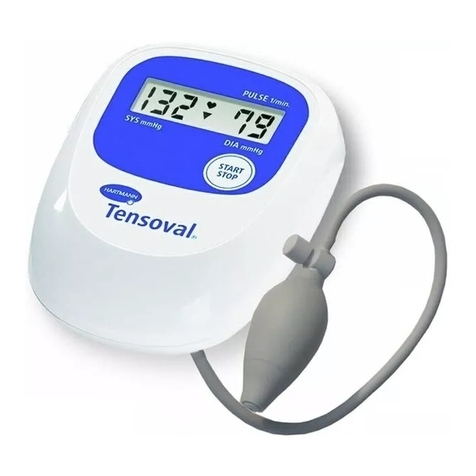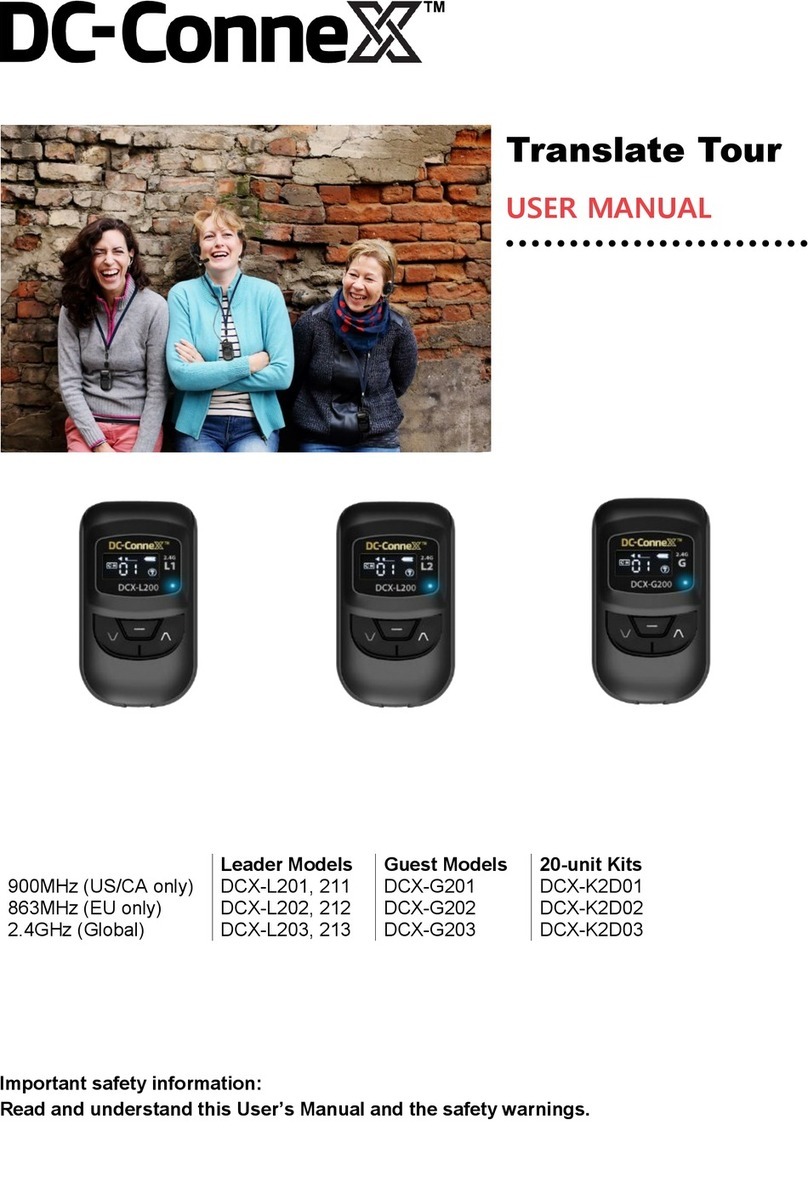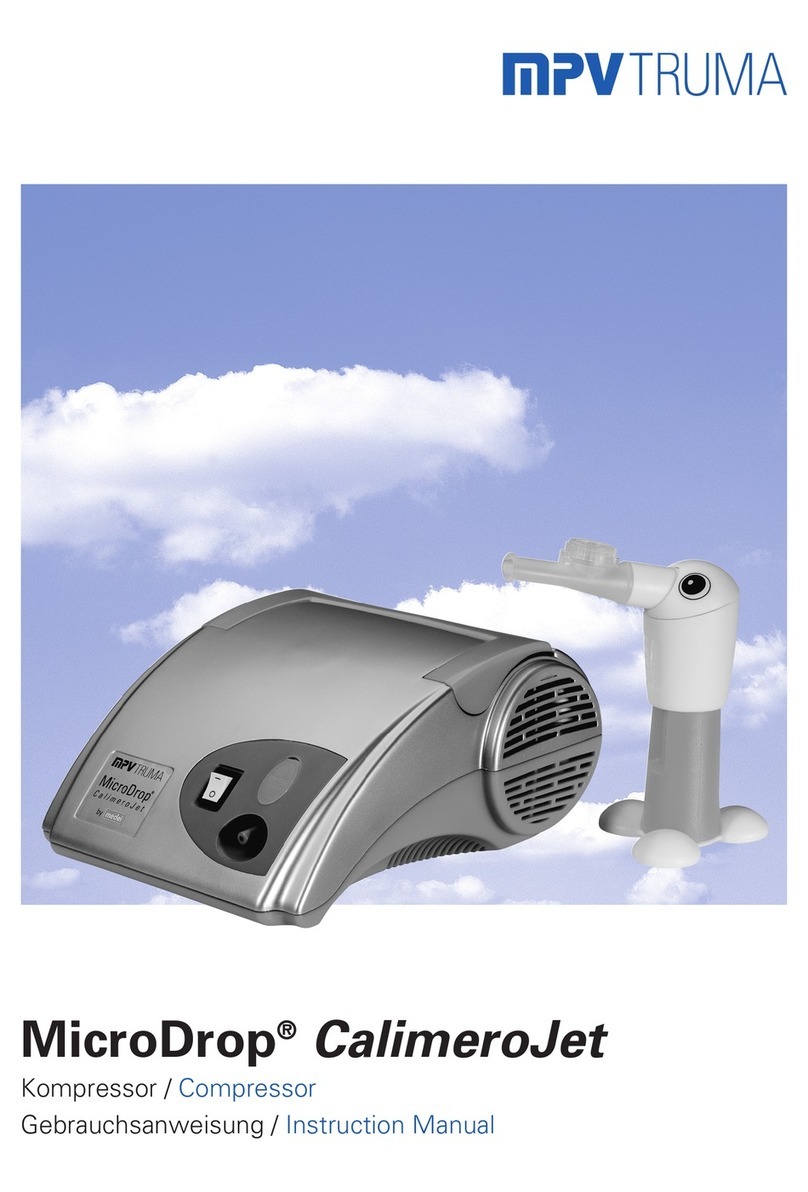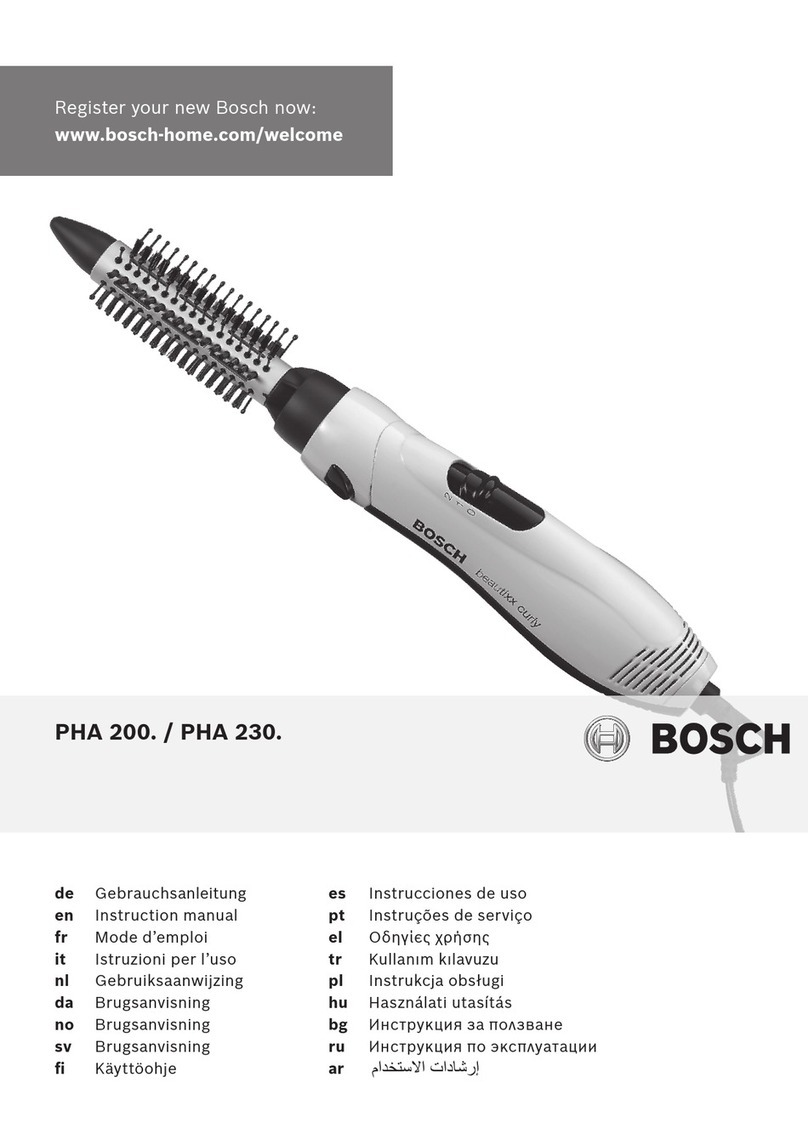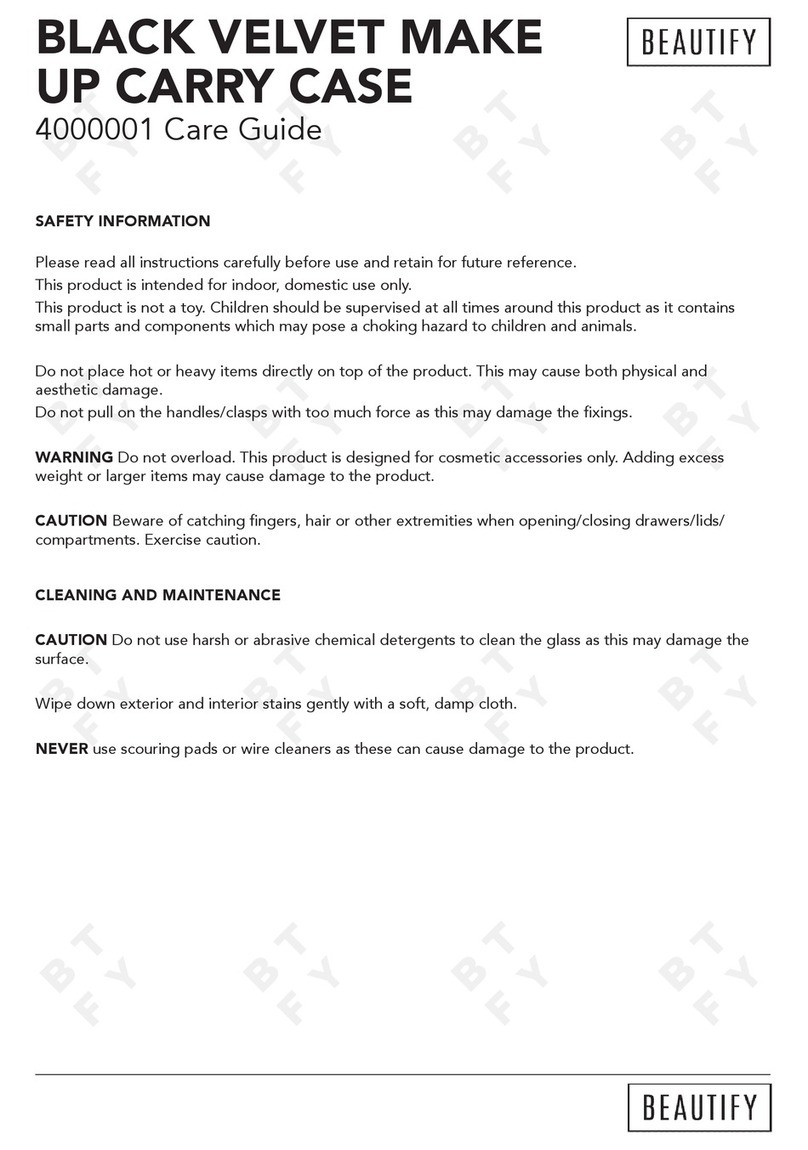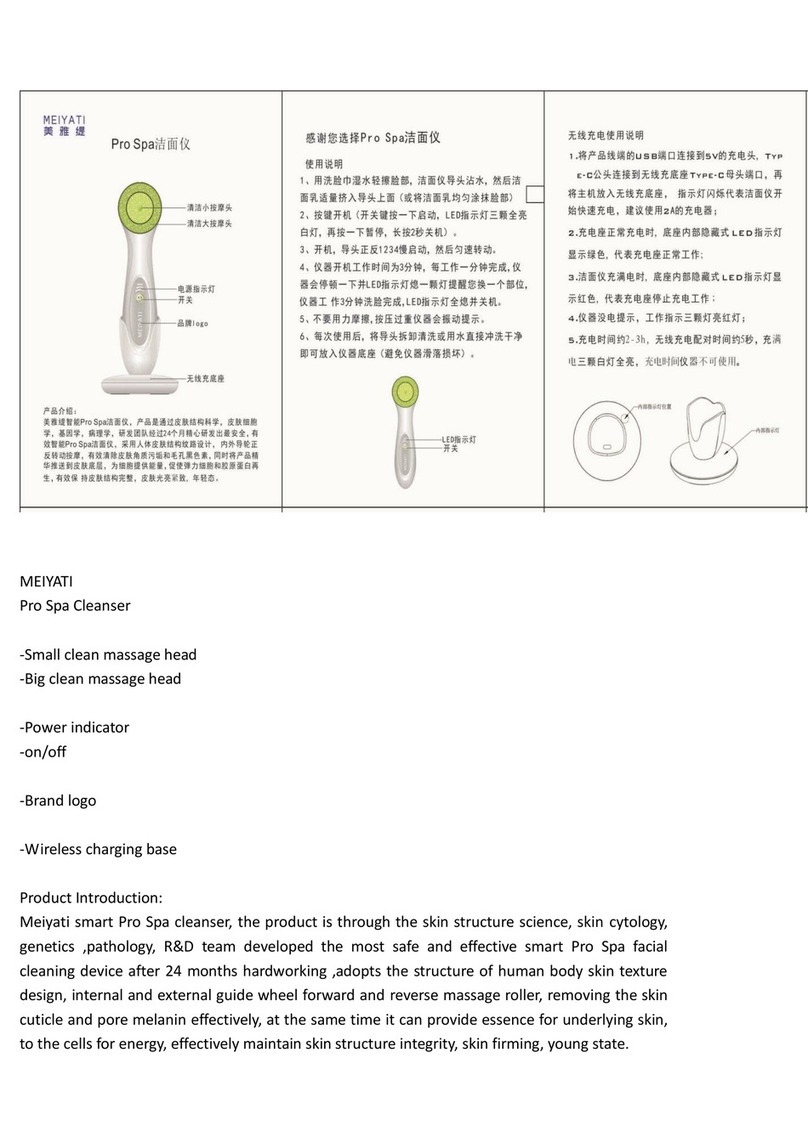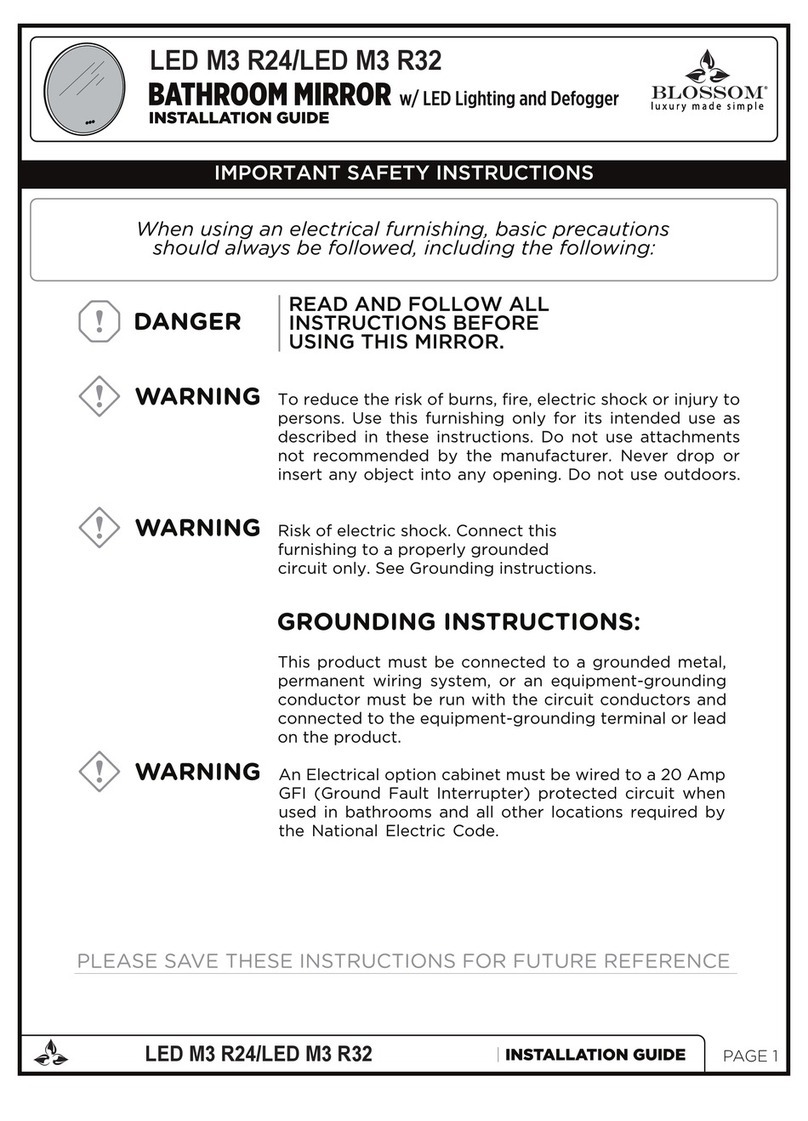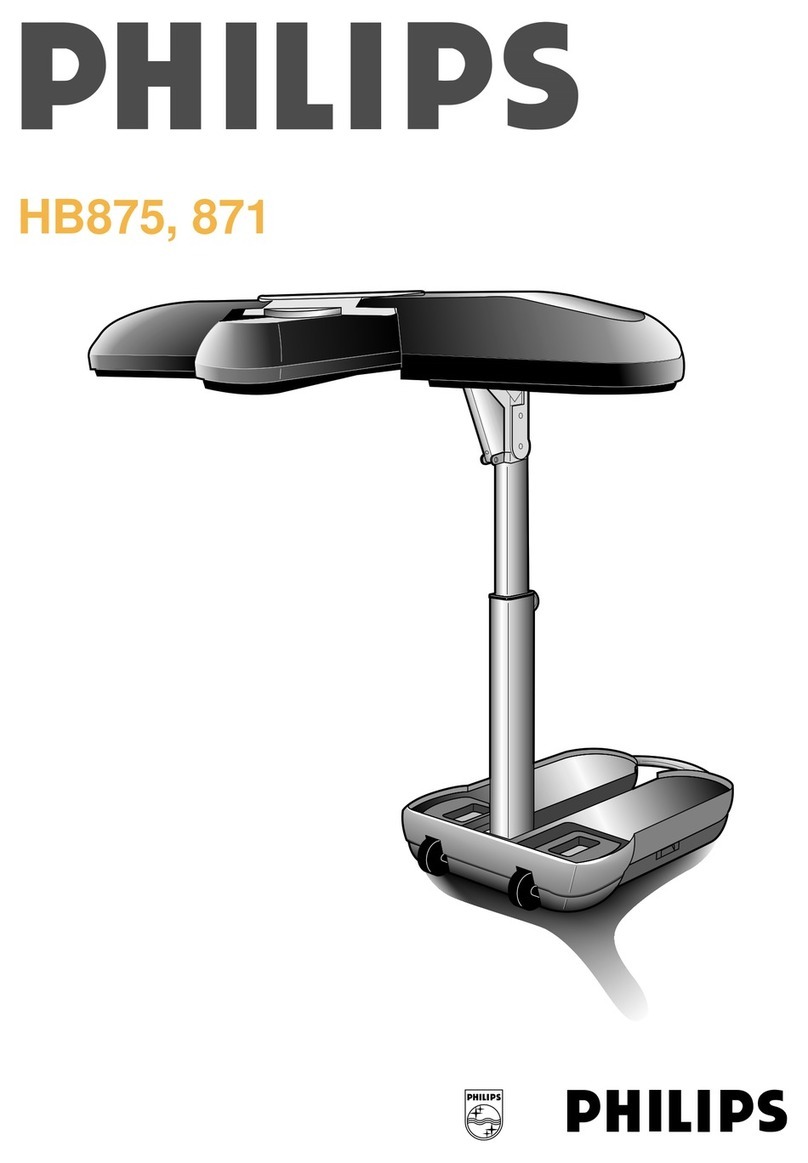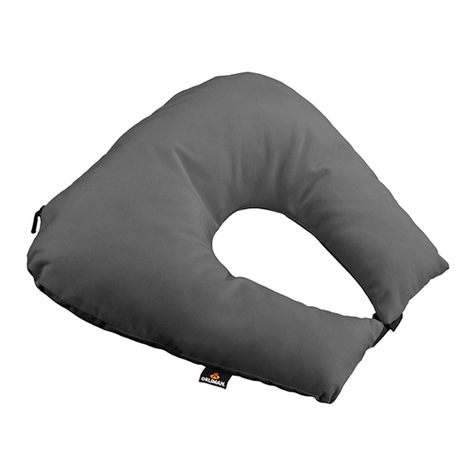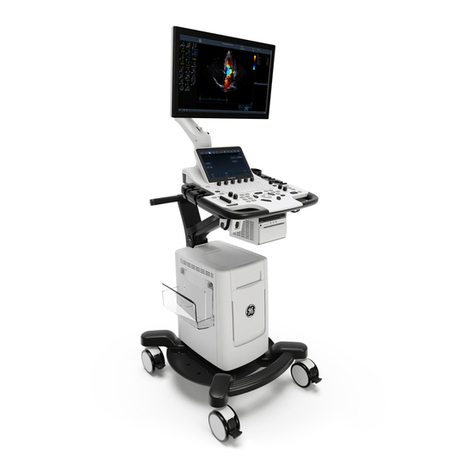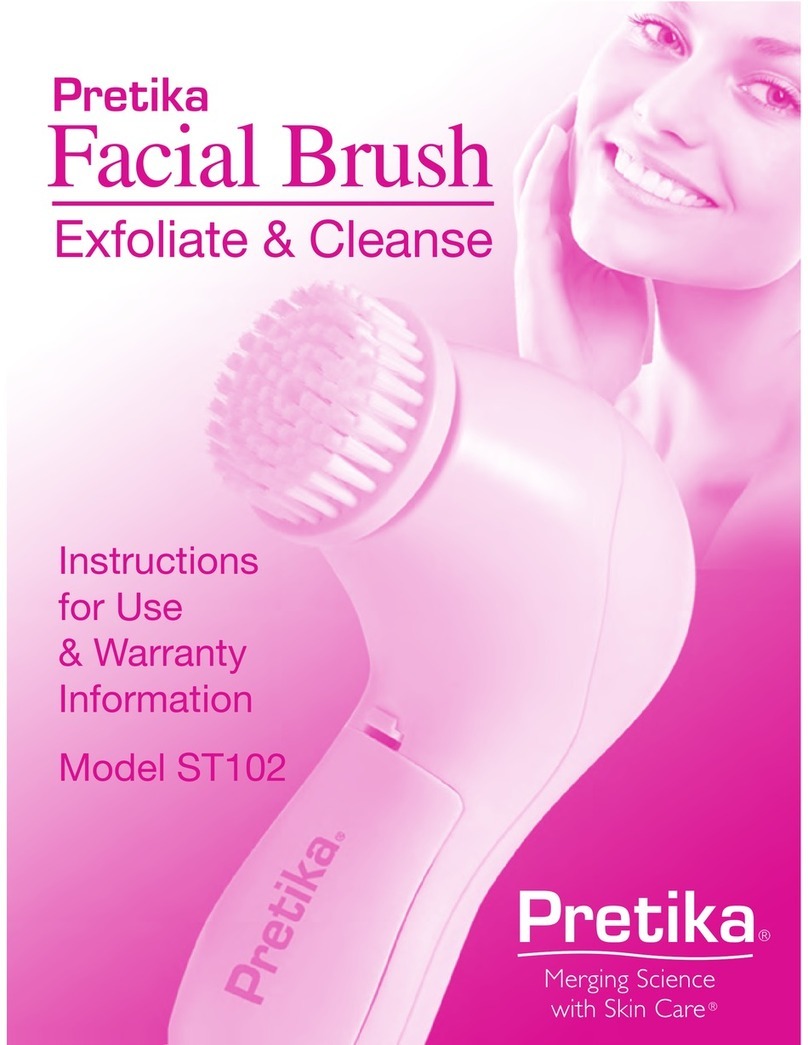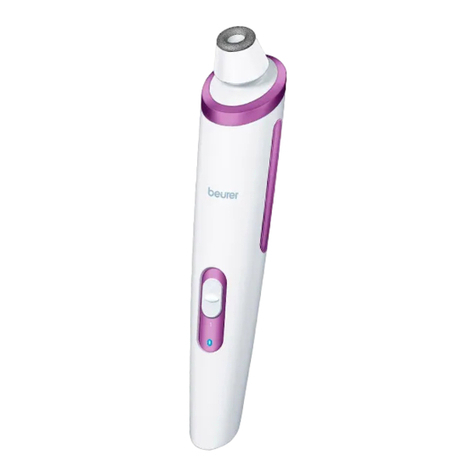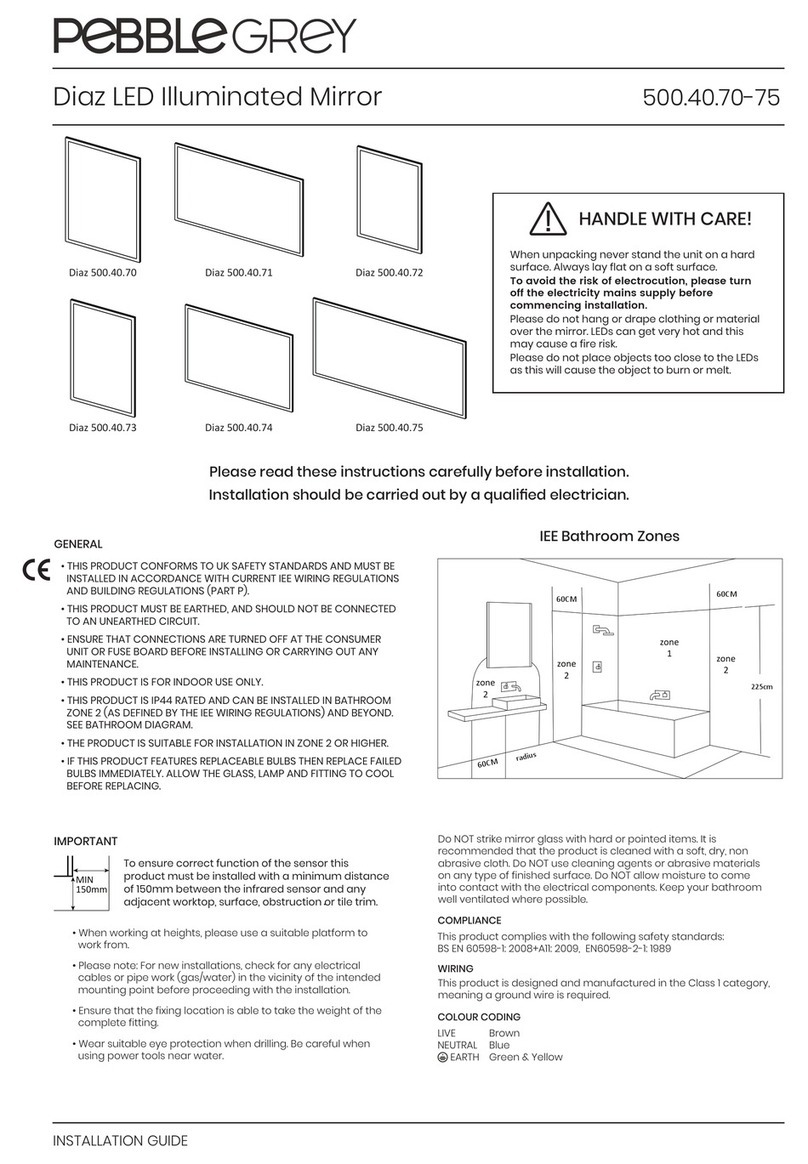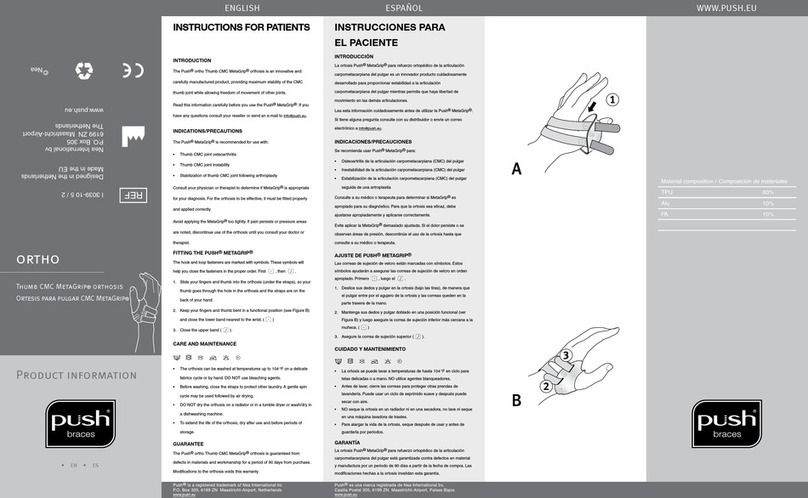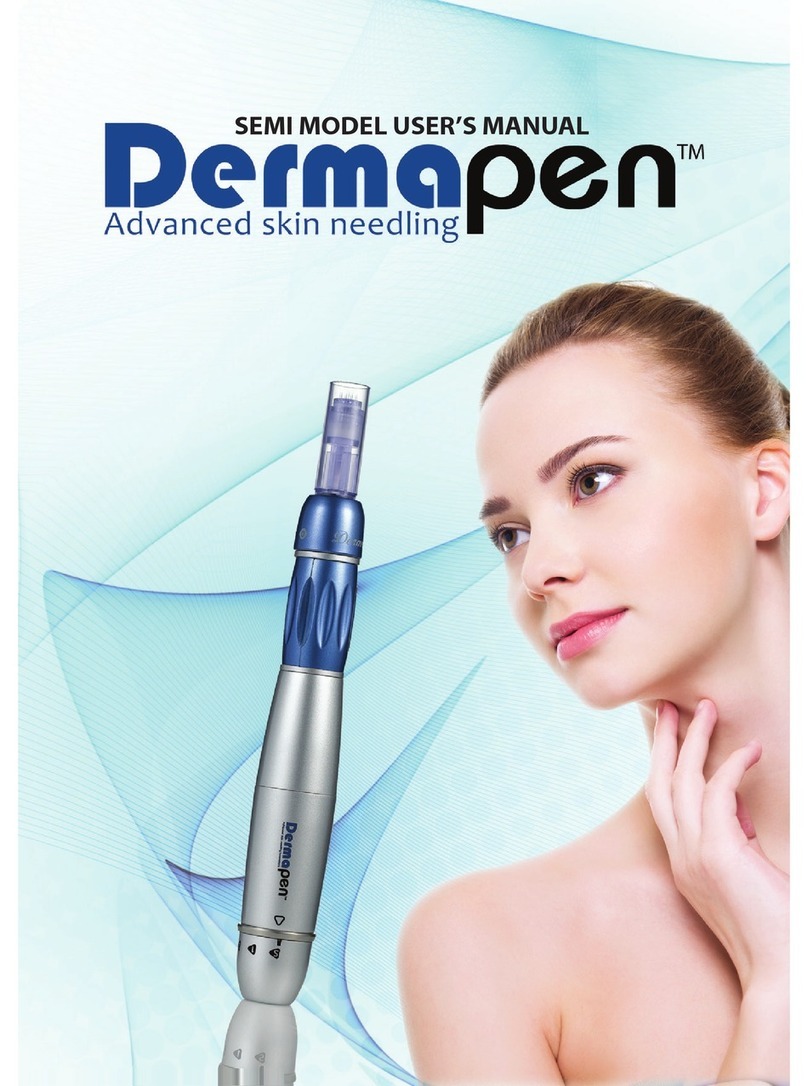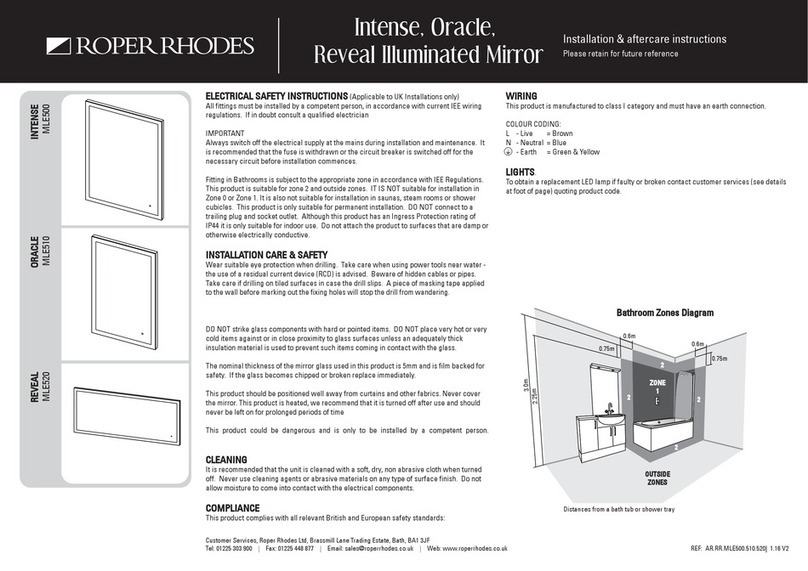Hartmann Tensoval comfort User manual

PAUL HARTMANN AG · 89522 Heidenheim, Germany
ES – Laboratorios HARTMANN S.A. · 08302 Mataró
GB – PAUL HARTMANN Ltd. · Heywood/Lancashire OL10 2TT
GR – PAUL HARTMANN Hellas A.E. · 16674 Glyfada/Athina
HK – PAUL HARTMANN Asia-Pacific Ltd. · Hong Kong
PT – PAUL HARTMANN LDA · 2685-378 Prior Velho
ZA – HARTMANN South Africa · 2194 Johannesburg
www.hartmann.info
R
R
Instructions for use
Instrucciones de uso
Manual de utilização
√‰ËÁ›Â˜ ¯Ú‹Ûˆ˜
Kullanım Kılavuzu
069 604/1 (1209)
*Umschlag 2. SK 15.12.09 02:06 Seite 1

Please read this introduction
carefully before use as correct
measurement can only be carried out fol-
lowing these instructions. Should you have
any further questions on our product or on
measuring blood pressure, please contact
our Customer Service (a list of addresses is
given in the warranty document). On the
Internet, you can visit our homepage on
www.hartmann.info
Para una medición correcta de
la presión arterial lea atentamente
estas instrucciones antes de utilizar el apa-
rato. Si tuviera alguna duda respecto
a nuestro producto o respecto a la medici-
ón de la presión arterial, puede dirigirse a
nuestro servicio de atención al cliente
(véase lista de direcciones en el certificado
de garantía). En Internet puede visitarnos
en nuestra página web:
www.hartmann.info.
Por favor leia cuidadosamente o
manual antes da sua utilização,visto
que uma medição correcta da tensão arte-
rial só pode ser garantida se estas indica-
ções forem respeitadas. Caso tenha
mais perguntas sobre o nosso produto ou
sobre a medição da tensão arterial, pode
dirigir-se ao nosso serviço de assistência
ao cliente (veja lista de endereços no
certificado de garantia). Na Internet pode
visitar-nos na nossa Homepage em
www.hartmann.info.
¶·Ú·Î·ÏÒ ‰È·‚¿ÛÙ ÚÔÛÂÎÙÈο
ÙËÓ ÂÈÛ·ÁˆÁ‹ ÚÈÓ ÙË ¯Ú‹ÛË.
°È· Ó· οÓÂÙ ۈÛÙ€˜ ÌÂÙÚ‹ÛÂȘ Ú€ÂÈ
Ó· ·ÎÔÏÔ˘ı‹ÛÂÙ ÙȘ ·Ú·Î¿Ùˆ Ô‰ËÁ›Â˜
ÚÔÛÂÎÙÈο. ∞Ó €¯ÂÙ ÂÚ·ÈÙ€Úˆ ·Ôڛ˜
Û ۯ€ÛË Ì ÙÔ ÚÔ˚fiÓ ‹ Ì ÙË Ì€ÙÚËÛË Ù˘
›ÂÛ˘, ·Ú·Î·Ï›ÛÙ ӷ ÂÈÎÔÈÓˆÓ‹ÛÂÙ ÌÂ
ÙËÓ ÀËÚÂÛ›· ∂͢ËÚ€ÙËÛ˘ ÙˆÓ ¶ÂÏ·ÙÒÓ
Ì·˜ (ÌÔÚ›Ù ӷ ‚Ú›Ù ϛÛÙ· ‰È¢ı‡ÓÛˆÓ
ÛÙÔ Î›ÌÂÓÔ Ù˘ ÂÁÁ‡ËÛ˘). ªÔÚ›ÙÂ
›Û˘ Ó· ÂÈÛÎÂÊı›Ù ÙË ‰È‡ı˘ÓÛË Ì·˜
ÛÙÔ ÿÓÙÂÚÓÂÙ: www.hartmann.info.
Lütfen, kullanmadan önce bu kılavu-
zu itina ile okuyunuz, zira doğru
tansiyon ölçümü bu uyarılar dikkate alın-
dığında mümkündür. Ürün ve tansiyon ölçü-
mü hakkında daha başka sorularınız varsa
müşteri servislerimize (garanti belgesindeki
adreslere bakınız) memnuniyetle başvurabi-
lirsiniz. www.hartmann.info
adresi altındaki homepage’imizi internet
aracılığıyla ziyaret edebilirsiniz.
www.hartmann.info
*Umschlag 2. SK 15.12.09 02:06 Seite 3

43
™˘Á¯·ÚËÙ‹ÚÈ· ÁÈ· ÙËÓ ·ÁÔÚ¿ ·˘ÙÔ‡ ÙÔ˘
ÔÈÔÙÈÎÔ‡ ÚÔ˚fiÓÙÔ˜ Ù˘ ÂÙ·ÈÚ›·˜
HARTMANN. ΔÔ Tensoval comfort ›ӷÈ
€Ó· ·˘ÙfiÌ·ÙÔ ÈÂÛfiÌÂÙÚÔ Ô˘, Ì ÙËÓ
Ù¯ÓÔÏÔÁ›· ÌÂÙÚ‹ÛÂˆÓ (Fuzzy Logic),
ÂÈÙÚ€ÂÈ ÁÚ‹ÁÔÚ˜ Î·È ·ÎÚȂ›˜
ÌÂÙÚ‹ÛÂȘ Ù˘ Û˘ÛÙÔÏÈ΋˜ Î·È ‰È·ÛÙÔÏÈ΋˜
›ÂÛ˘, ηıÒ˜ ›Û˘ Î·È ÙÔ˘ ÛÊ˘ÁÌÔ‡
¯ÚËÛÈÌÔÔÈÒÓÙ·˜ ÌÈ· Ì€ıÔ‰Ô
·ÏÌÔÁÚ¿ÊËÛ˘ ÁÈ· ÙË Ì€ÙÚËÛË.
HARTMANN’ dan satın aldığınız bu
kaliteli üründen dolayı sizi kutlarız.
Tensoval comfort büyük-küçük tansiyon
ve nabız frekansını ozilometrik metodla
akıllı ölçme teknolojisi (Fuzzy Logıc)
ile hızlı ve güvenilir bir şekilde ölçmeyi
mümkün kılan fulotomatik bir tansiyon
ölçme aletidir.
Congratulations on your purchase of this
HARTMANN quality product.
Tensoval comfort is a fully automatic
blood pressure monitor which uses intelli-
gent measuring technology (Fuzzy Logic)
to take rapid and reliable measurement of
systolic and diastolic blood pressure as
well as pulse rate using an oscillometric
measuring method.
Felicidades por la compra de este producto
HARTMANN de gran calidad.
Tensoval comfort es un tensiómetro total-
mente automático con tecnología de
medición inteligente (Fuzzy Logic) que
permite medir de manera rápida y fiable
la presión arterial sistólica y diastólica así
como la frecuencia del pulso mediante un
procedimiento de medición oscilométrico.
Parabéns por ter adquirido este produto
de qualidade HARTMANN.
O Tensoval comfort é um tensiómetro que
permite, através de uma tecnologia inteli-
gente de medição (Fuzzy Logic), uma
medição rápida e fiável da tensão arterial
sistólica e diastólica e das pulsações,
utilizando um método de medição oscilo-
métrico.
English
Instructions for use Pages 6 – 16
Español
Instrucciones de uso Página 18 – 29
Português
Manual de utilização Página 30 – 41
∂ÏÏËÓÈο
√‰ËÁ›Â˜ ¯Ú‹Ûˆ˜ ™ÂÏ›‰· 42 – 53
Türkçe
Kullanım Kılavuzu Sayfa 54 – 64
76 – 66

5 6
1. General information on blood
pressure
The human heart beats approx. 60 to 80
times per minute. This causes blood to be
pumped into the arterial vascular system
and supplies the body with oxygen and
necessary nutrients. A constant pressure
known as blood pressure is required to
enable the blood to flow into the smallest
of blood vessels. In measuring blood pres-
sure, two values are determined. The
systolic value is the maximum pressure
as the heart beats. Diastolic value is the
minimum pressure between two heart-
beats. Blood pressure is expressed as,
e.g. 120/80 in millimetres of a mercury
column (mmHg).
Blood pressure changes constantly in
each individual and thus creates the
requirements necessary for the functional
capacity of the body. Thus fluctuations in
blood pressure are perfectly normal.
However, if blood pressure values are
constantly elevated at rest, hypertension
or high blood pressure is present.
Mains adapter socket
Conexión a la red
Entrada para o transformador
ÀÔ‰Ô¯‹ ÌÂÙ·Û¯ËÌ·ÙÈÛÙ‹
Manşet Bağlantısı
Cuff socket
Conector del manguito
Entrada para ligação da braçadeira
ÀÔ‰Ô¯‹ ÂÚȯÂÈÚ›‰Ô˜
Elektrik Prizi
START/STOP button
Tecla START/STOP
∫Ô˘Ì› START/STOP
START/STOP-Tuşu
Assessment Systolic pressure Diastolic pressure
Optimal up to 120 mmHg up to 80 mmHg
Normal up to 130 mmHg up to 85 mmHg
Normal limit values 130 – 139 mmHg 85 – 89 mmHg
Grade 1 hypertension 140 – 159 mmHg 90 – 99 mmHg
Grade 2 hypertension 160 – 179 mmHg 100 – 109 mmHg
Grade 3 hypertension over 180 mmHg over 110 mmHg
The World Health Organisation (WHO) has set out the following limit values:
Battery compartment
Compartimiento de
baterías
∫Ô˘Ì› START/STOP
Pil Yeri
Extra large LCD display
Gran visor digital
Display digital extra grande
ªÂÁ¿ÏË ËÏÂÎÙÚÔÓÈ΋ ÔıfiÓË
Ekstra büyük LCD Ekran
Memory button M1
Tecla de memoria M1
Tecla de memória M1
∫Ô˘Ì› ª¡∏ª∏™ M1
Hafıza-Tuşu M1
M1
Tensoval comfort:
“Draw-clamp” cuff for upper arm circumference
22 – 32 cm
Manguito de estribo para contorno de brazo 22– 32 cm
Braçadeira de estribo para diâmetro de braço 22– 32 cm
¶ÂÚȯÂÈÚ›‰· ,,Draw-clamp“ ÁÈ· ÂÚÈÊ€ÚÂÈ· ‚Ú·¯›ÔÓ·
22 – 32 ÂÎ
Üst kol çevre uzunluğu 22 – 32 cm için geçirmeli manşet
Tensoval comfort large:
“Draw-clamp” cuff for upper arm circumference
32 – 42 cm
Manguito de estribo para contorno de brazo 32– 42 cm
Braçadeira de estribo para diâmetro de braço 32– 42 cm
¶ÂÚȯÂÈÚ›‰· ,,Draw-clamp“ ÁÈ· ÂÚÈÊ€ÚÂÈ· ‚Ú·¯›ÔÓ·
32 – 42 ÂÎ
Üst kol çevre uzunluğu 32 – 42 cm için geçirmeli manşet
Memory button M2
Tecla de memoria M2
Tecla de memória M2
∫Ô˘Ì› ª¡∏ª∏™ M2
Hafıza-Tuşu M2
M2

High blood pressure is one of the common-
est causes of disability and death. And yet
many people do not know they are suffe-
ring from high blood pressure. This is
because the problem is only noticed when
the conditions it leads to are at an advanc-
ed stage. These may be life-threatening,
such as heart attack, stroke or kidney
damage. Only regular blood pressure
monitoring enables high blood pressure to
be detected early. You have decided in
favour of blood pressure self-measure-
ment and this will contribute to your
health care. This is the only way to ensure
efficient protection against the dangerous
results which may affect your heart and
circulation.
2. Important notes for self-
measurement
Self measurement of blood pressure
does not replace either treatment or
regular check-ups by your doctor.
The drug dose prescribed by your doc-
tor may thus on no account be altered
without consultation.
Self-measurement of blood pressure
must be conducted regularly and over a
long period of time. With the assistance
of the blood pressure values record-
ed regularly by you in your blood
pressure diary, high blood pressure
can be detected early and your doctor
can initiate optimal treatment.
Individual readings are situation-related
and thus are not useful.
In order to compare values, it is impor-
tant that you always take your blood
pressure at rest. So you should relax
for 5 minutes before taking a measure-
ment.
Even slight changes in internal and
external factors (e.g. deep breathing,
stimulants, talking, excitement, climatic
factors) lead to fluctuations in blood
pressure. This is why your doctor and
pharmacist often obtain different read-
ings.
Measure your blood pressure regularly
in the morning and evening at about
the same time, as blood pressure
fluctuates during the course of the day.
You should not move or talk during
the measurement process.
Always measure blood pressure on the
naked upper arm, and make sure that
items of clothing rolled up do not impair
circulation. Always measure blood pres-
sure on the same arm and rest the arm,
relaxed on a support.
The normal cuff is for an upper arm
circumference between 22 and 32 cm,
the larger cuff is for an upper arm
circumference between 32 and 42 cm.
Outside these limits correct readings
may no longer be guaranteed.
When taking repeated measurements,
relax for at least one minute between
measurements as otherwise false
English
7

displays the saved reading for
person 2
protection from electric
shock (type BF)
pay attention to operating
instructions
4. Current supply
Battery operation
Open the battery cover on the underside
of the device (see fig.) Insert batteries
(see chap. 13, Technical data), ensuring
correct polarity (“+” and “–”). Close the
battery lid.
We recommend the use of high-quality
batteries as other batteries or
accumulators could affect the precision
of measurement. Never mix old and new
batteries or batteries made by different
results are obtained.
In severe cardiac arrhythmias (cases
of disturbed heart rhythm), measure-
ments should only be taken in consulta-
tion with a doctor. Due to the oscillo-
metric measuring method, measure-
ments taken with this device may in
some instances be false or fail to pro-
duce a reading (Err).
The monitoring of blood pressure is
extremely important in pregnancy, as
the pressure may be changed by the
pregnancy. The results should, however,
only be interpreted in consultation with
the doctor.
3. Control displays and symbols
flashes when the device is
measuring and the pulse is
being taken
change batteries
measuring error, cf. Chap. 12
appears during inflation
appears during automatic
checking
displays the saved reading for
person 1
8
1.
2.
M1
M2

as above for setting the year. Repeat
procedure for saving the day, hour and
minute. Each time you change the bat-
teries the date and time must be reset.
6. Applying the cuff
Measurement should be taken on the
naked arm which usually has the
higher blood pressure value.
When using the draw-clamp cuff
thread the end of the cuff through the
metal hoop if necessary, so as to form
a loop. In this instance the Velcro
fastener must be on the outside. Wrap
the cuff round the upper arm, the tube
lies in the centre of the elbow angle,
pointing towards the hand. Take the
free end of the cuff, wrap it firmly round
the arm and close the Velcro fastener.
Wrap the moulded cuff round the upper
arm. The air tube of the cuff lies in the
centre of the angle of the elbow,
pointing towards the hand. Take the
free end of the cuff, wrap it firmly round
the arm and close the Velcro fastener.
Check that the white strip is placed in
the middle of the elbow, on the artery
and that the lower edge of the cuff is
approx. 2.5 cm from the bend of the
elbow (see fig.).
manufacturers.
If you do not intend to use the device
for a longer period of time, please
remove the batteries.
In the interests of environmental protec-
tion, used batteries should not be
disposed of in household waste. Please
observe valid regulations when dis-
posing of the batteries or use municipal
collecting bins.
Do not discard with household waste,
but use specially designated disposal
facilities (recycling centres etc.).
Operation with mains adapter
There is a connecting socket on the rear
side of the device for the mains adapter
(output voltage: 6V DC/600mA). To ensure
measuring precision, please use only a
HARTMANN mains adapter which may be
obtained from your pharmacist or special-
ist medical supplier.
5. Setting date and time
After inserting the batteries the time
function automatically appears. The
flashing year key is then displayed. The
year can be changed using the M1 (+)
and M2 (–) buttons. Save the year by
pressing the START/STOP button.
Next the month is saved. The number
on the right will flash. Use the buttons
English
9

can become damaged through the
resulting excess pressure.
Press the START/STOP button. The
appearance of all display segments
followed by a flashing arrow pointing
downwards, shows that the device is
checking itself automatically and is
ready for use. Subsequently, automatic
inflation begins at approx. 190 mmHg.
If the pump pressure is insufficient or if
the measurement is interrupted, the
device continues to pump at a rate of
30 mmHg until a high enough pressure
is reached.
If you require a higher inflation pres-
sure, you can avoid having to repeat
pumping by pressing the START/STOP
button again shortly after inflation starts
until the desired cuff pressure is
reached. This should be approx.
30 mm Hg over the systolic value.
Important: do not move or talk
throughout the entire measuring
procedure.
As pressure in the cuff decreases, the
heart symbol and the falling cuff pres-
sure are displayed.
A beep indicates the end of measure-
ment. The systolic and diastolic read-
ings appear simultaneously on the
display, with the pulse rate beneath
them (see fig.).
The cuff should be firm but not too
tight. You should be able to push one
or two fingers between the arm and the
cuff. Note: Uneven wrapping of the cuff
can lead to inaccurate results.
Use the markings on the edge of the
cuff to check cuff size is correct. The
white arrow should lie within the red
marking strip.
Insert the cuff connector in the cuff
socket on the left side of the device.
NB: do not use the mains connection
socket on the back of the device!
7. Measuring blood pressure
It is recommended that blood pressure
measurements are carried out whilst
seated. Place your arm with the palm
upwards on a support and make sure
the cuff is at the level of the heart.
Do not turn the device on until the cuff
has been applied, otherwise the cuff
10
2.5 cm

sponding symbol M1 or M2 will be
displayed. First, the average value of
all saved data will be shown for this
person. An “A” appears on the display
and the number of readings, from
which the average value was calculated
is displayed in the top right-hand corner
(see fig.).
Press the memory button to access
memory position No. 1
Tensoval comfort can store up to
30 measurements. The most recent
measurement is always in memory
position No.1 and all old measurement
values shift down one position. When
all memory positions are occupied the
oldest value will be deleted each time.
By repeatedly pressing the memory-
button all stored values can be recalled
one by one.
The measurement and the relevant
number of the memory position appear
when you access stored values. The
memory position, date and time appear
in 2 – 3 second intervals.
You can cancel the memorys recall at
The time appears above the reading
and M1 or M2 is displayed on the left.
M1 represents the reading for the first
person and M2 for the second. As long
as the reading is displayed, you can
apply the values to the respective per-
son by pressing M1 or M2. Otherwise,
if you do not apply them the reading is
automatically saved for the person on
the display.
To switch off the device, simply press
the START/STOP button. Otherwise the
device will switch itself off automatically
after 3 minutes.
If you wish to stop measurement for
any reason, simply press the
START/STOP button. The inflation or
measuring process is interrupted and
an automatic fall in pressure occurs.
8. Memory function
The memory recall is activated when
the “Memory Button” is pressed, when
the device is switched off. Press M1 for
the first person’s recorded values and
M2 for the second person. The corre-
English
11

clean the device. Do not use detergents
or solvents.
The cuff can be cleaned carefully with
a moist cloth and mild, pH-neutral
soap. Do not completely immerse the
cuff in water.
10. Checking of measurement function
We recommend that measurement func-
tion be checked at intervals of two years
in the case of professional users, such as
pharmacies, medical practices and clinics.
You should also observe the national regu-
lations, such as, in Germany, the Decree
on Sales of Medical Devices. Measurement
function checks can be carried out either
by PAUL HARTMANN AG (see Service
address), by competent authorities, or au-
thorised maintenance providers against
compensation.
Instructions for Calibration Mode:
Remove the batteries in order to switch to
calibration mode. hold down on the
START/STOP button and then insert the
batteries. Next, release the button and,
after a few moments, two zeros will ap-
pear one above each other.
Instructions on checking measurement
function will be supplied on request to
competent authorities, or authorised
maintenance providers.
12
any time by pressing the START/STOP
button. Otherwise the device will switch
itself off after a few seconds.
Should the power supply fail, e.g. when
changing the batteries, the stored
values will still be available.
Deleting stored values
You can delete all stored data in M1 or in
M2 for the respective person. To do this,
press the corresponding memory button.
The average value will then appear on the
display. Press down on the memory button
and after four seconds the display will
flash. After eight seconds all data for the
respective person will be deleted and only
M1 or M2 will be displayed. If you release
the button before the end of the eight-
second time limit, no data will be deleted.
9. Maintenance
Do not expose the device to extreme
temperatures, humidity, dust or direct
sunlight.
This device consists of high quality pre-
cision components. Do not drop the
device and protect it against hard
knocks.
The moulded cuff should not be folded
or overstretched.
Never open the device. Repairs may
only be carried out by qualified individu-
als.
Only use a soft, moistened cloth to

11. Warranty
This product comes with a 3-year war-
ranty. Details of warranty conditions and
contact addresses can be found in the
separate warranty document.
English
13
12. Error displays
Error which has occurred
Device will not switch on
Possible causes
No batteries, they have been inserted incorrectly
or are dying. If necessary, check the mains adapter is
connected correctly.
Moving or speaking during the measurement.
Cuff was incorrectly or loosely applied.
Please repeat reading.
Pressure in cuff exceeds 330 mmHg. Therefore, the
pressure will be automatically released.
Batteries are almost dead. Only a few more measure-
ments are possible.
Batteries are dead. Insert new batteries.

Switch the device off if an error symbol appears. Check the possible causes and note
the instructions on self-measurement in Chapter 2. Relax for a minute and take the
measurement again. Do not move or talk during the measurement.
Error which has occurred
Cuff will not inflate
Implausible reading
Possible causes
Cuff connection is incorrectly positioned in device.
Incorrect cuff size.
Cuff placed on top of clothing.
Rolled up clothing impedes blood circulation.
Moving, talking or excitement during measurement.
Deep breathing during measurement process.
Lack of relaxation before measurement.
Stimulants taken just before measurement.
14

English
15
13. Technical specifications
Measuring method: oscillometric
Display range: 0 – 300 mmHg
Measuring range: Systole (SYS): 50 – 250 mmHg
Diastole (DIA): 40 – 180 mmHg
Pulse: 40 – 160 beats / minute
Technical accuracy of
measurement: cuff pressure: +/– 3 mmHg
Pulse: +/– 5 % of displayed pulse frequency
Clinical accuracy of
measurement: complies with the EN 1060 standard, part 3.
Power supply: 4 x 1.5 V alkaline Mangan Mignon (AA/LR06) batteries,
or optional HARTMANN mains adapter
Battery capacity: Tensoval comfort: > 1500 measurements
Tensoval comfort large: > 1000 measurements
Inflation pressure: ca. 190 mmHg
Automatic cut-out: 5 minutes after end of measuring process.
Cuff: Normal cuff: 22 – 32 cm
Large cuff: 32 – 42 cm
Pressure release valve: electronically and pulse frequency controlled linear valve
Storage capacity: 2 x 30 measurements and average value
Operating conditions: Ambient temperature: +10 °C to +40 °C
Relative humidity: 15 – 90 %
Storage/transport conditions: Ambient temperature: –20 °C to +50 °C
Relative humidity: 15 – 90 %
Serial number: see battery compartment

15. Accessories and spare parts
To ensure measurement accuracy, only
use original HARTMANN accessories
which may be obtained from your pharma-
cist or specialist medical supplier.
HARTMANN mains adapter
Code No.: 900 153
“Moulded cuff”, normal
Code No.: 900 166
Upper arm circumference 22 – 32 cm
“Draw-clamp cuff” normal
Code No.: 900 154
Upper arm circumference 22 – 32 cm
“Draw-clamp cuff” large
Code No.: 900 155
Upper arm circumference 32 – 42 cm
Date of revision of the text: 2009-12
16
14. Legal requirements and guidelines
Tensoval comfort complies with the
requirements of the EC directive,
93/42/EEC on Medical devices and bears
the CE-marking.
The device complies with the EN 1060
standard relating to non-invasive blood
pressure monitors Part 1/1995: General
requirements and Part 3/1997: Additional
requirements for electromechanical blood
pressure measuring systems. Clinical
testing of measurement accuracy was
performed in Germany according to the
testing protocol recommended by EN
1060-3 (DIN 58130: Central Hospital
Reinkenheide, Prof. Anlauf, Germany, and
according to ANSI/AAMI SP10-1992).
Manufacturer:
PAUL HARTMANN AG, 89522 Heidenheim
Germany

English
17

1. Información general sobre la
presión arterial
El corazón humano late entre 60 y 80
veces por minuto. De este modo se bom-
bea la sangre por el sistema circulatorio,
proporcionando oxígeno y nutrientes. Para
que el flujo sanguíneo llegue hasta los
vasos sanguíneos más diminutos se
requiere una presión constante: la presión
arterial. Al medir la presión arterial se
obtienen dos valores: la presión sistólica,
que es el nivel máximo de presión en el
momento del latido y la presión diastólica,
que es el nivel mínimo de presión entre
dos latidos. Así hablamos de una presión
arterial de, por ejemplo, 120/80, que se
indica en milímetros de mercurio (mmHg).
La presión arterial varía continuamente en
todas las personas, creando así las condi-
ciones necesarias para el buen funciona-
miento del cuerpo. Las oscilaciones de la
presión arterial son algo perfectamente
normal. Sin embargo, si se registra cons-
tantemente una presión arterial elevada
en estado de reposo se habla de hiper-
tensión o tensión alta.
18
Valoración Presión sistólica Presión diastólica
Óptima hasta 120 mmHg hasta 80 mmHg
Normal hasta 130 mmHg hasta 85 mmHg
Límite de lo normal 130 – 139 mmHg 85 – 89 mmHg
Hipertensión grado 1 140 – 159 mmHg 90 – 99 mmHg
Hipertensión grado 2 160 – 179 mmHg 100 – 109 mmHg
Hipertensión grado 3 más de 180 mmHg más de 110 mmHg
La Organización Mundial de la Salud (OMS) ha establecido los siguientes niveles límite:

médico podrá determinar el tratamiento
más adecuado. Las mediciones puntua-
les son el resultado de una situación
concreta y, por consiguiente, no reflejan
su estado de salud.
Para poder comparar resultados deberá
tomarse la presión arterial siempre en
estado de reposo, relajándose durante
cinco minutos antes de proceder a la
medición.
Las más leves alteraciones de factores
internos o externos (como pueden ser
respirar profundamente, ingerir alimen-
tos, hablar, excitarse o que se produz-
can cambios en las condiciones climá-
ticas) provocan oscilaciones de la
presión arterial. Ésta es la razón por
la que, con frecuencia, se registran
niveles de presión diferentes en la con-
sulta del médico o en la farmacia.
Tómese la presión con regularidad por
la mañana y por la noche, siempre a la
misma hora, ya que la presión arterial
oscila a lo largo del día.
No se mueva ni hable mientras se toma
la presión.
Colocar el manguito siempre sobre el
brazo desnudo y comprobar que las
prendas de ropa no impidan la circula-
ción de la sangre. Efectuar la medición
siempre en el mismo brazo y apoyar
el antebrazo relajado sobre una super-
ficie.
El manguito normal está indicado para
contornos de brazo entre 22 y 32 cm;
La hipertensión es una de las causas más
frecuentes de invalidez y muerte. A pesar
de ello, muchas personas no son conscien-
tes de que padecen de tensión elevada,
ya que a menudo las molestias surgen
cuando las enfermedades provocadas a
consecuencia de esa hipertensión se ha-
llan ya en un estado avanzado. Las conse-
cuencias pueden llegar a ser mortales,
como el infarto de miocardio, la apoplejía
o la insuficiencia renal. La hipertensión
sólo se puede detectar a tiempo si se
efectúan controles periódicos de la presión
arterial. Si usted se ha decidido por la
automedición podrá prevenir enfermeda-
des y preservar su salud, protegiéndose de
una manera eficaz contra las peligrosas
consecuencias para el corazón y el
sistema circulatorio.
2. Observaciones a tener en cuenta en
la automedición
Ni la terapia ni el control médico regular
pueden ser sustituidos por la automedi-
ción de la presión sanguínea. Las dosis
de medicación prescritas por el médico
no deben ser modificadas por propia
iniciativa bajo ningún concepto.
El paciente debe tomarse la presión a lo
largo de un período prolongado de
tiempo. Gracias a los niveles de pre-
sión que usted anote regularmente
en su ficha de control, podrá detec-
tarse a tiempo la hipertensión y su
Español
19

Error en la medición, véase
capítulo 12
Indicación durante la
operación de inflado
Indicación durante la
comprobación automática
Indicación de los valores
memorizados para la persona 1
Indicación de los valores
memorizados para la persona 2
Protección contra descargas
eléctricas (tipo BF)
Consultar las instrucciones de
uso
4. Abastecimiento de energía
Accionamiento a pilas
Abrir la tapa de las pilas, situada en la
cara inferior del aparato (ver ilustración).
Introducir las pilas (consultar el capítulo
13 sobre Datos técnicos). Comprobar que
se introducen con la polaridad correcta
( «+» y «–» ). Cerrar el compartimiento de
las pilas.
el manguito large para contornos de
brazo entre 32 y 42 cm. Fuera de
estos márgenes no puede garantizarse
que los resultados de la medición sean
correctos.
Entre dos mediciones consecutivas es
necesario tomarse al menos un minuto
de descanso para relajarse, ya que,
de no hacerlo, se obtendrían unos
resultados distorsionados.
En caso de graves alteraciones del
ritmo cardíaco (arritmias) no debe pro-
cederse a la automedición sin previa
consulta médica. Debido al método de
medición oscilométrico, en algunos
casos pueden obtenerse resultados
erróneos en la medición o incluso no
obtener resultado alguno (Err).
El control de la presión arterial es
sumamente importante durante el
embarazo, ya que la presión puede
verse alterada a consecuencia de la
gestación. En cualquier caso, los niveles
de presión registrados sólo deberán
interpretarse en consulta con el médico.
3. Indicadores de control y símbolos
Intermitente cuando el aparato
está midiendo y se está deter-
minando el pulso
Cambiar las pilas
M1
M2
20

garantizar la precisión en la medición,
emplear exclusivamente adaptadores
HARTMANN.
5. Configuración de la fecha /hora
Una vez colocadas las pilas, se activa
automáticamente la función de
fecha/hora. En el visor aparece intermi-
tente la cifra correspondiente al año. La
configuración del año se modifica con
las teclas M1 (+) y M2 (–). El año se
memoriza pulsando la tecla START/STOP.
El segundo dato que se debe memo-
rizar es el mes, que se indica en la cifra
intermitente que aparece a la derecha
del visor. Utilice las teclas del mismo
modo que para configurar el año. Siga
el mismo procedimiento para configurar
día, hora y minutos. La fecha y la hora
deberán volverse a configurar cada vez
que se cambien las pilas.
6. Colocación del tensiómetro de brazo
La medición deberá realizarse sobre el
brazo desnudo que tenga la tensión
arterial más elevada.
En el manguito de estribo introducir el
extremo del manguito por el estribo de
metal, formando un lazo. El cierre
deberá quedar hacia fuera. Introducir el
brazo en el manguito. El tubo del aire
deberá estar centrado sobre la cara
interior del codo en dirección a la mano.
Recomendamos emplear las pilas de
alta calidad, ya que otras pilas u otros
cargadores podrían ocasionar una
pérdida de precisión en la medición. No
mezclar nunca pilas usadas con nuevas,
o pilas de diferentes tipos.
Extraer las pilas del aparato si éste no
va a utilizarse durante un período pro-
longado de tiempo.
Depositar las pilas usadas en los conte-
nedores adecuados.
No se debe echar a la basura domésti-
ca, sino eliminar en instalaciones de
recogida de residuos (centros para
materiales reciclables, centros de
reciclaje, etc.).
Conexión a la red
En la parte posterior del aparato se
encuentra un conector para el adaptador
a la red (salida 6V DC/600mA). Para
1.
2.
Español
21

se está empleando el tamaño de
manguito correcto. La flecha blanca
deberá quedar dentro de la barra roja
de señalización.
Acoplar el tubo del manguito en el
conector para el manguito, situado
en el lado izquierdo del aparato.
Atención: no confundir con el conector
a la red, situado en la parte posterior
del aparato.
7. Medición de la presión arterial
Recomendamos que se tome la presión
sentado. Coloque el brazo sobre una
superficie, con la palma de la mano
hacia arriba y compruebe que el
manguito se halla a la altura del
corazón.
No poner en marcha el aparato hasta
haber conectado el manguito, ya que si
no, se puede estropear el manguito
debido al exceso de presión acumulado.
Pulsar la tecla START/STOP. Cuando
aparecen todos los segmentos del visor
seguidos de una flecha intermitente que
señala hacia abajo el aparato está
comprobando sus funciones automáti-
camente y está listo para iniciar la
medición. A continuación comienza el
inflado automático hasta que se
alcanza un nivel de presión de unos
190 mmHg. Si esta presión de inflado
no fuera suficiente o si se ve alterada la
medición, el aparato se seguirá inflando
Sujetar el extremo libre del man guito y
cerrarlo firmemente alrededor del brazo.
Colocar el manguito de brazal alrede-
dor del brazo. El tubo del aire deberá
estar centrado sobre la cara interior del
codo en dirección de la mano. Tomar el
extremo libre del manguito y cerrarlo
firmemente alrededor del brazo.
Comprobar que la marca blanca quede
centrada en la cara interna del codo
sobre la arteria y que el borde inferior
del manguito esté a unos 2,5 cm del
codo (véase ilustración).
El manguito quedará ajustado pero sin
apretar demasiado: deberá quedar
espacio para introducir uno o dos
dedos entre el brazo y el manguito.
Recuerde que si el manguito está mal
colocado los resultados de la medición
pueden verse alterados.
Comprobar con la ayuda de las marcas
situadas en el borde del manguito que
2,5 cm
22
Other manuals for Tensoval comfort
3
Table of contents
Languages:
Other Hartmann Personal Care Product manuals
